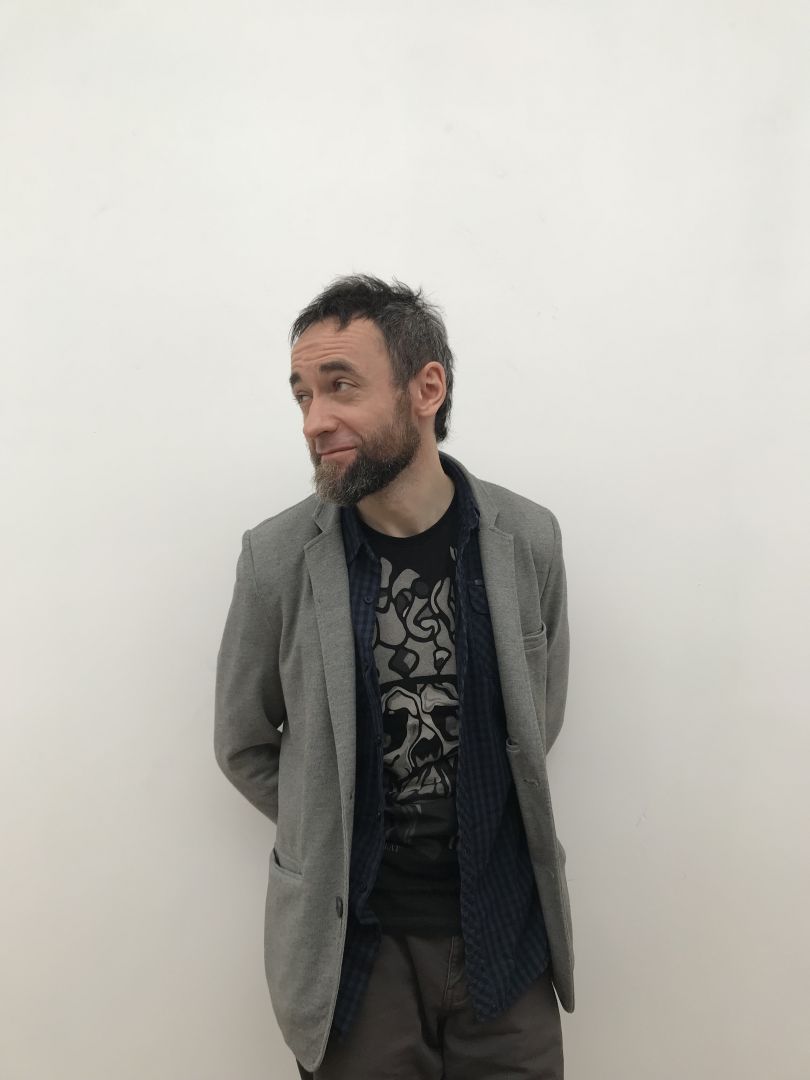Michał Pszczółkowski

Michał Pszczółkowski; fot. Halina Malijewska
Wydział: Zakład Historii i Teorii Sztuki
E-mail: michal.pszczolkowski@asp.gda.pl
Michał Pszczółkowski
“Less is more”. Ludwig Mies van der Rohe
Urodzony w 1981 roku w Ostrołęce. W 2005 ukończył studia magisterskie na Wydziale Sztuk Pięknych Uniwersytetu Mikołaja Kopernika w Toruniu. Studiował także w Oldenburgu i Bambergu. W 2010 uzyskał stopień doktora nauk humanistycznych w zakresie nauk o sztuce, a w 2018 roku habilitację na Wydziale Architektury Politechniki Gdańskiej. Od 2019 roku jest zatrudniony na stanowisku profesora Akademii Sztuk Pięknych w Gdańsku.
W latach 2008-2010 był autorem koncepcji i głównym koordynatorem projektu Exploseum w Bydgoszczy. Projekt ten polegał na adaptacji na cele muzealno-turystyczne linii produkcyjnej nitrogliceryny na terenie fabryki materiałów wybuchowych DAG Fabrik Bromberg. Realizacja projektu Exploseum została uhonorowana Nagrodą Ministra Kultury i Dziedzictwa Narodowego i uznana Wydarzeniem Muzealnym Roku SYBILLA 2011 w kategorii wystawy techniki, ponadto autor otrzymał za ten projekt Nagrodę Marszałka Województwa Kujawsko-Pomorskiego w kategorii Fundusze Unijne w 2011 roku.
Stypendysta Fundacji na Rzecz Nauki Polskiej w Warszawie oraz Ministerstwa Kultury i Dziedzictwa Narodowego, członek Stowarzyszenia Historyków Sztuki (od 2018 Prezes Zarządu Oddziału Toruńskiego)i Towarzystwa Opieki nad Zabytkami.
Zainteresowania badawcze Michała Pszczółkowskiego koncentrują się wokół historii architektury, szczególnie nowoczesnej (XX wiek). Opublikował kilkanaście monografii naukowych, publikował także m.in. w "Informationen zur modernen Stadtgeschichte", "Centropa. A Journal of Central European Architecture and Related Arts", "Zapiskach Historycznych", "Kwartalniku Historii Nauki i Techniki" i "Kwartalniku Architektury i Urbanistyki". W 2017 został laureatem Nagrody im. Oskara Haleckiego w X edycji konkursu "Książka Historyczna Roku" (głosowanie czytelników w kategorii: najlepsza książka naukowa za publikację "Kresy nowoczesne. Architektura na ziemiach wschodnich II Rzeczypospolitej 1921-1939").
[2019]
“Less is more.”
Ludwig Mies van der Rohe
He was born in 1981 in Ostrołęka. In 2005, he graduated from the Faculty of Fine Arts at Nicolaus Copernicus University in Torun. He also studied in Oldenburg and Bamberg. In 2010 he obtained a doctoral degree in humanities in the field of art sciences and in 2018 a habilitation at the Faculty of Architecture of Gdansk University of Technology. Since 2019, he has been employed as a professor at the Academy of Fine Arts in Gdansk. He was an author and the main coordinator of the Exploseum project in Bydgoszcz, which consisted of an adaptation of the nitroglycerin production line at the former German explosives factory (DAG Fabrik Bromberg) to the museum and tourist purposes. The implementation of the project was honoured with the Award of the Minister of Culture and National Heritage and recognized as the Museum Event of the Year SYBILLA 2011 in the category of technical exhibitions. The author himself was awarded by the Marshal of Kuyavian-Pomeranian Voivodeship in the category of European Funds 2011. Michał Pszczółkowski has also been distinguished with the grant of the Foundation for Polish Science in Warsaw and the Ministry of Culture and National Heritage. He is a member of the Association of Art Historians (President of the branch in Torun since 2018) and the Society for the Monuments Protection. His research areas focus on the history of architecture with the history of modern architecture (20th century) being his particular interest. He has published several scientific monographs. His articles appeared in "Informationen zur modernen Stadtgeschichte", "Centropa. A Journal of Central European Architecture and Related Arts", "Historical Notes", "Quarterly of History of Science and Technology", "Architecture and Urban Planning Quarterly" etc. In 2017, he received the Oskar Halecki Award in the 10th edition of the "Historical Book of the Year" competition (readers' vote in the category: best scientific book for the publication "Modern Borderlands. Architecture in the Eastern Territories of the Second Polish Republic 1921-1939").

